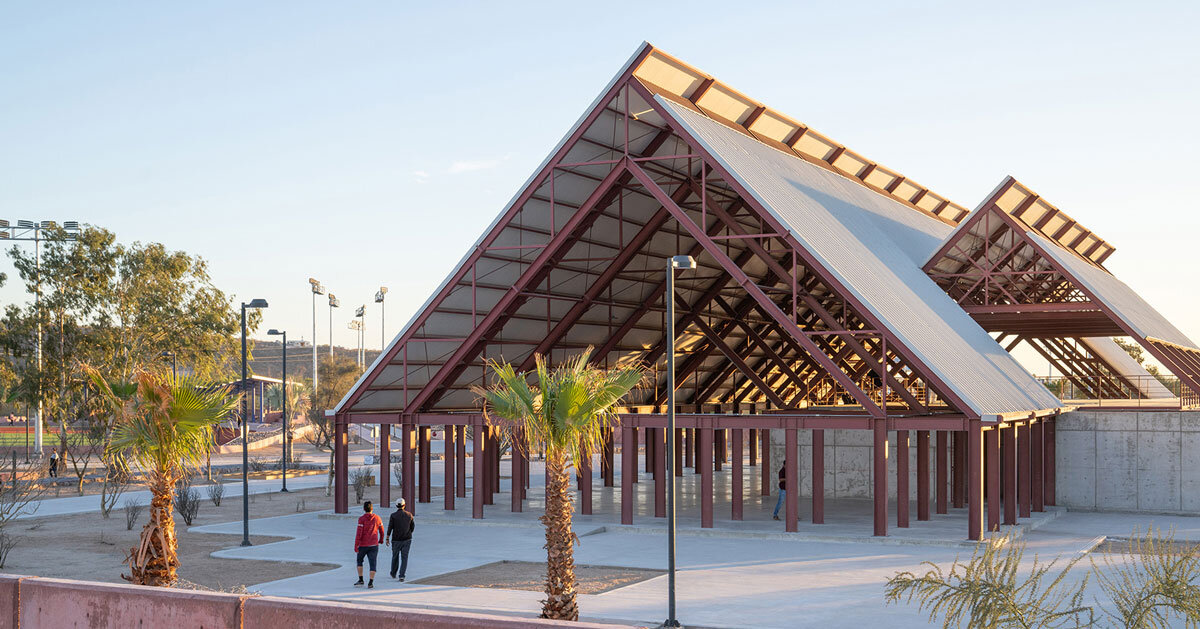CCA reimagines El Cajoncito as a linear public corridor
CCA | Bernardo Quinzaños has developed a masterplan for La Paz, Baja California Sur, in Mexico, aimed at transforming El Cajoncito, a seasonal stormwater channel, into integrated public infrastructure. The proposal reconfigures the site as a continuous public corridor, enhancing urban connectivity, mobility, and flood resilience. Key interventions include a new sports complex, a pedestrian and cycling path, and a vehicular bridge.
The existing dry riverbed currently acts as a major physical barrier between two urban districts, extending over approximately eight kilometers. During the rainy season, this area becomes impassable due to flooding. The new plan introduces infrastructure that both mitigates these hydrological challenges and improves day-to-day circulation for pedestrians, cyclists, and vehicles. The project connects La Paz’s waterfront malecón to peripheral neighborhoods through green infrastructure, improving accessibility and contributing to long-term urban resilience. The proposed bridge is engineered to maintain structural stability during extreme weather and seismic events, integrating flood-control measures into its drainage design. Alongside it, a dedicated pedestrian and cycling path supports non-motorized transport and includes shaded rest areas and public transit stops. Approximately 40% of the masterplan has been implemented to date, with the cycling path partially constructed and the sports complex fully completed.
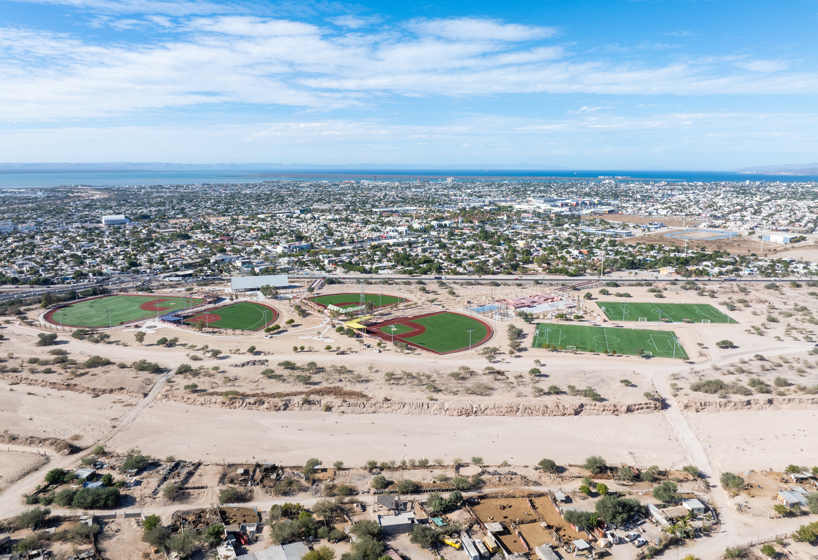
all images by Jaime Navarro
Community input shaped the design of Masterplan La Paz
Located within the El Cajoncito zone, the new Sports Complex responds to a need for athletic infrastructure in La Paz. Developed through community engagement, the facility provides accessible amenities for various sports and recreational activities. It features baseball and softball fields, soccer pitches, basketball and tennis courts, a skate park, and tracks for running and cycling. The design by CCA | Bernardo Quinzaños architectural practice includes four modular baseball pavilions, allowing for standardized construction and clear user orientation via color coding. Each field accommodates different age groups and skill levels, from youth to adult users, and supports athletic progression. Supporting infrastructure includes shaded seating and integrated furniture designed to address local climatic conditions and enhance user comfort.
A key component of the complex is a multipurpose building consisting of two gabled volumes on a shared steel frame. The open structure incorporates passive ventilation strategies and provides flexible indoor-outdoor space for physical and cultural activities. The ground level includes a shaded double-height gathering area, while internal spaces host administrative functions, music classrooms, a café, and a library. The building supports simultaneous programming and community events. The project decentralizes public services traditionally concentrated along the city’s waterfront, bringing recreational and cultural infrastructure to underserved areas. It offers accessible programming for youth and adults during non-working hours, contributing to community well-being and public engagement.
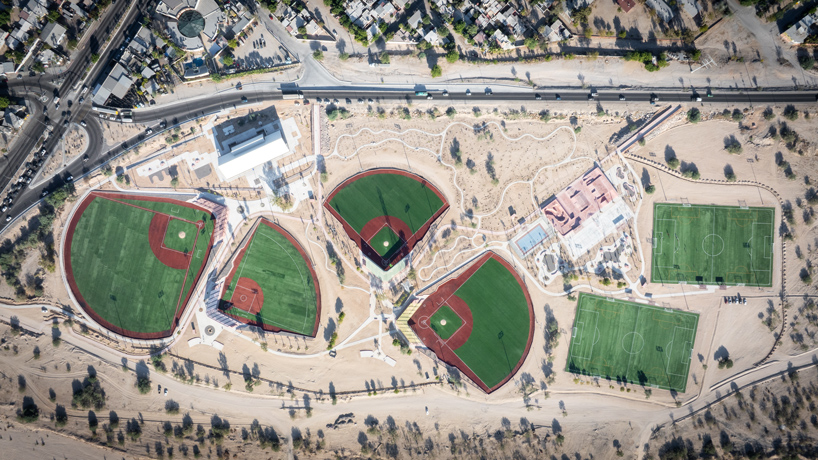
masterplan La Paz reimagines El Cajoncito as a linear public corridor
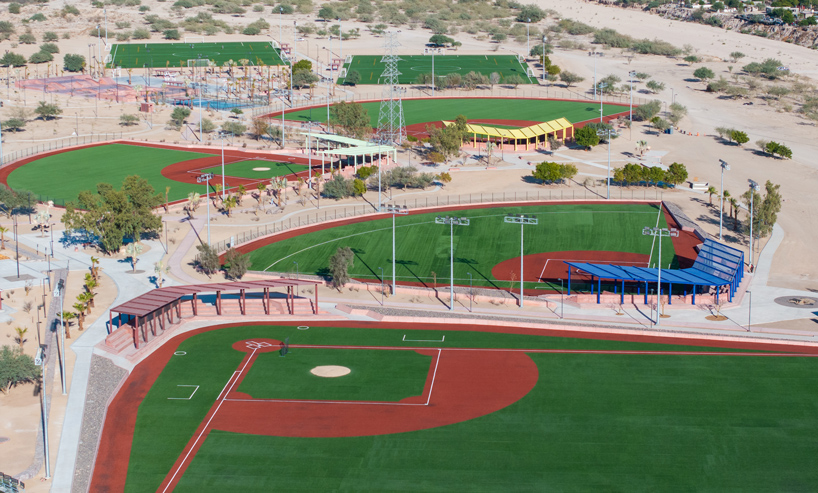
the dry riverbed is transformed into resilient green infrastructure
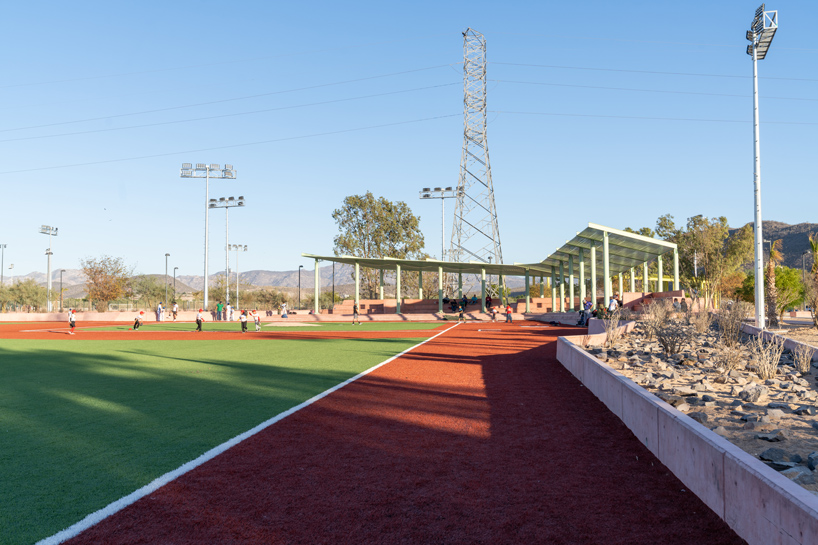
a new sports complex anchors the regeneration strategy
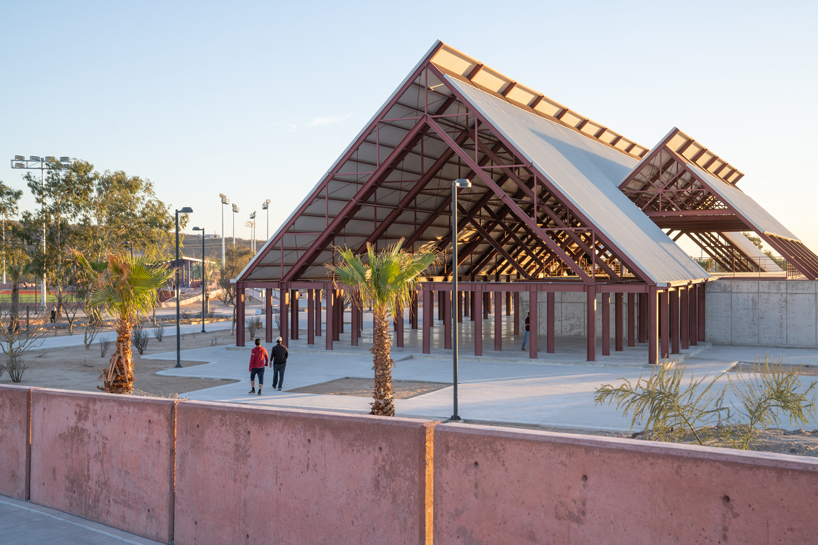
the masterplan addresses seasonal flooding with integrated infrastructure
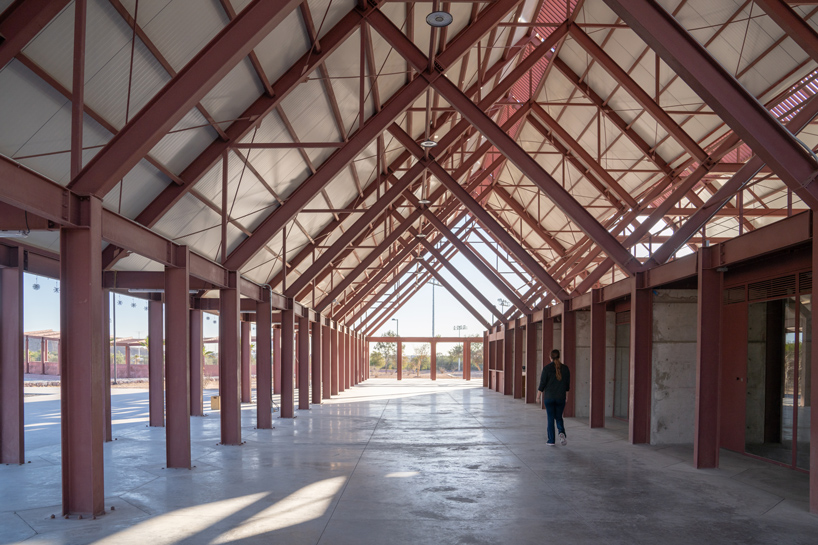
shaded seating areas address local climatic conditions
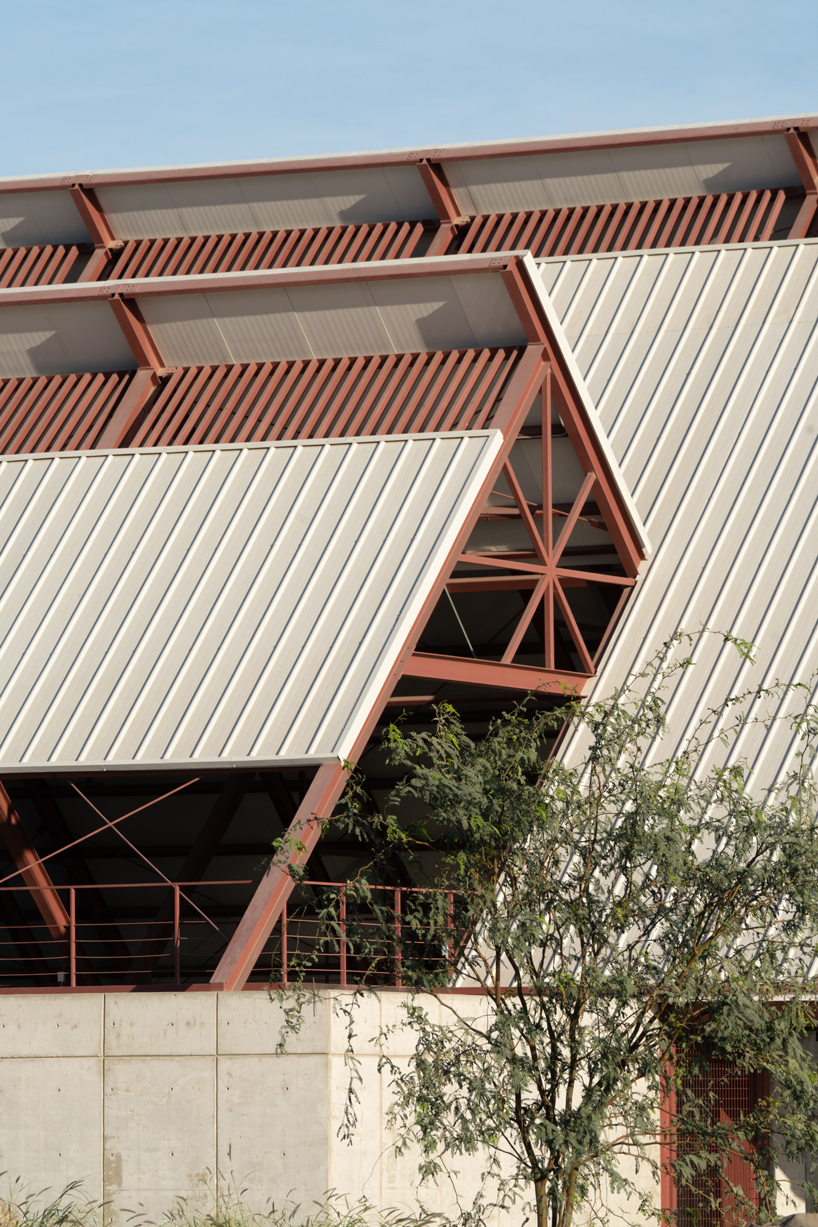
open-air structures use passive ventilation for climate responsiveness
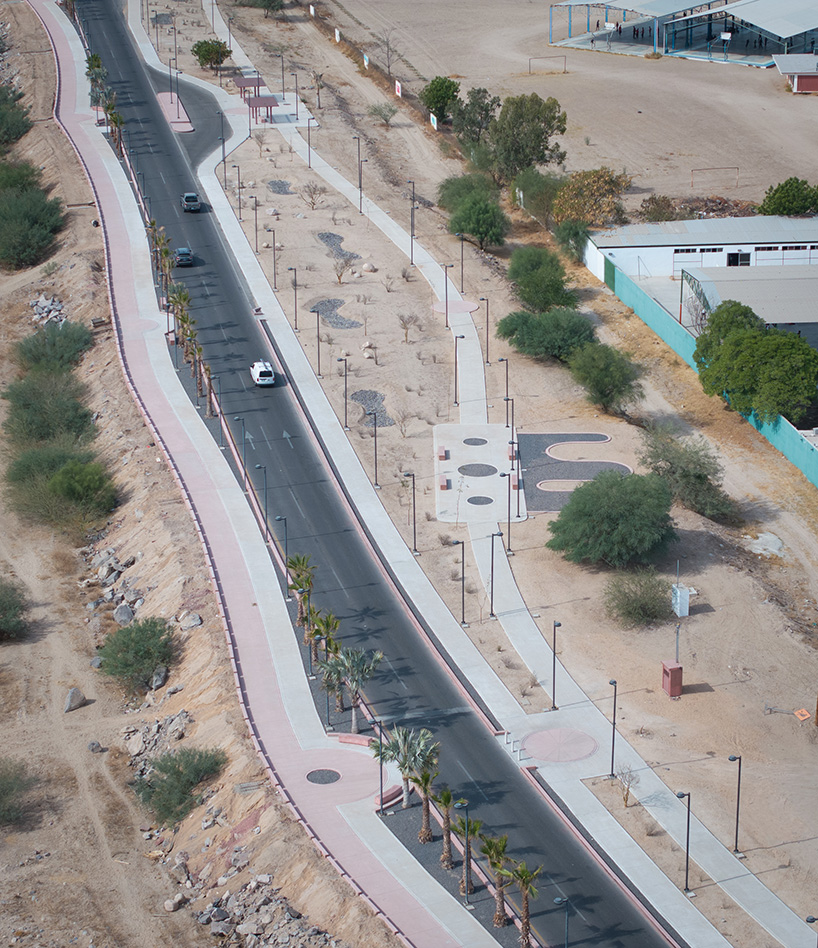
pedestrian and cycling paths improve non-motorized mobility
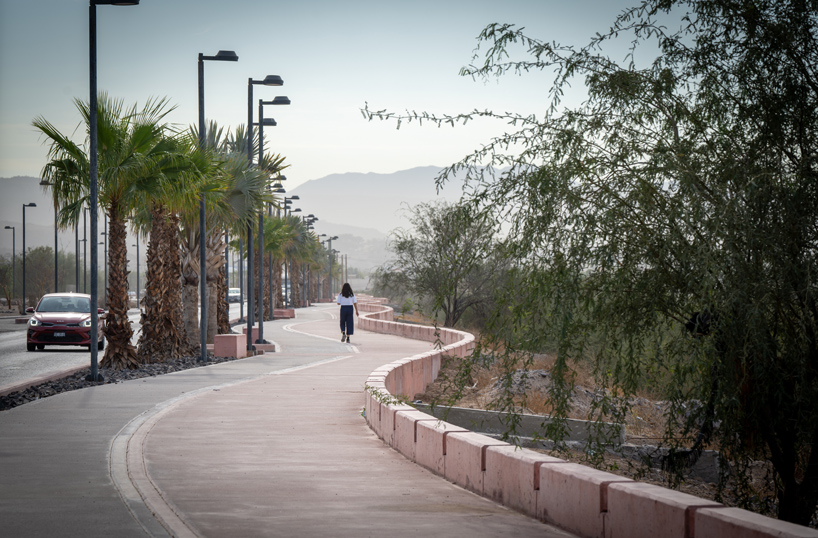
color-coded fields assist with wayfinding across the complex
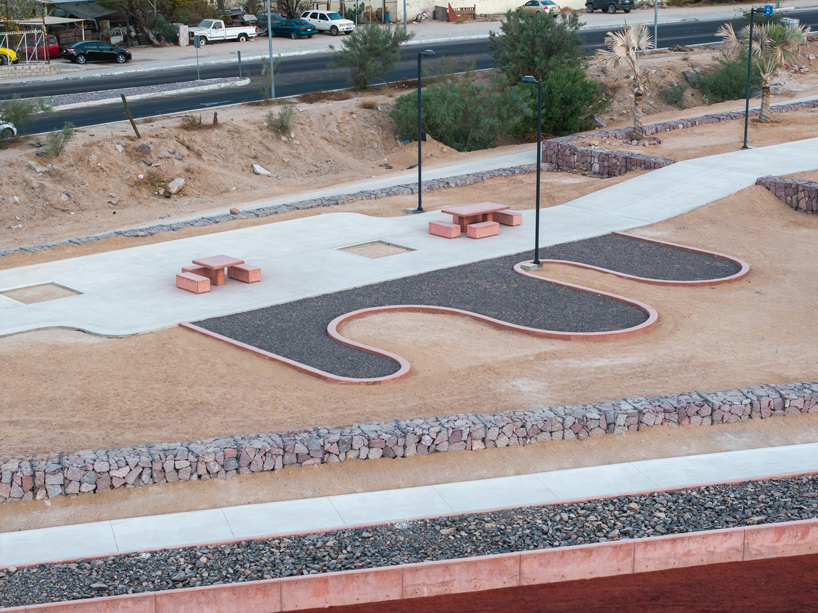
the bridge and paths reduce travel distances for residents
